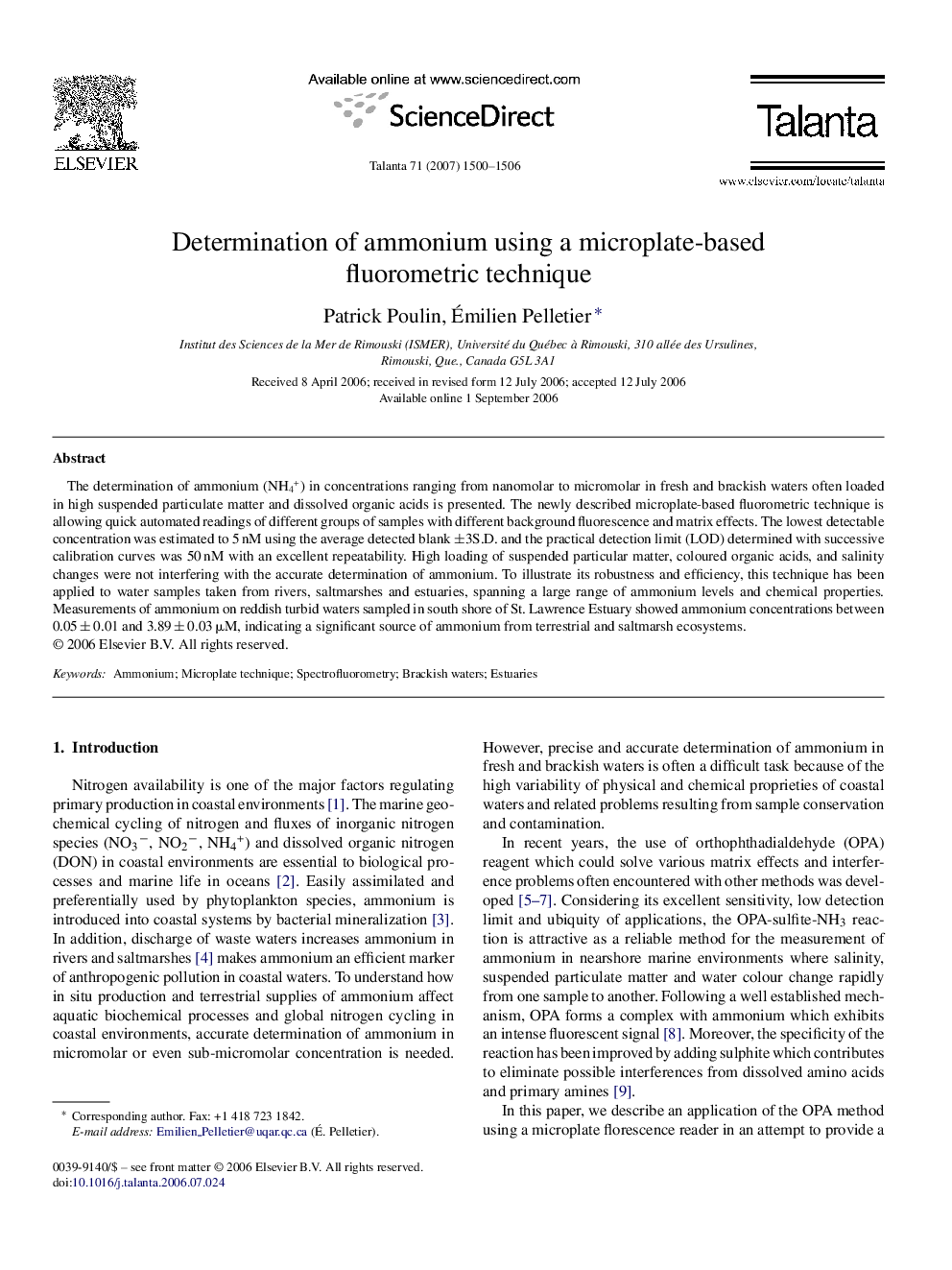| Article ID | Journal | Published Year | Pages | File Type |
|---|---|---|---|---|
| 1245154 | Talanta | 2007 | 7 Pages |
The determination of ammonium (NH4+) in concentrations ranging from nanomolar to micromolar in fresh and brackish waters often loaded in high suspended particulate matter and dissolved organic acids is presented. The newly described microplate-based fluorometric technique is allowing quick automated readings of different groups of samples with different background fluorescence and matrix effects. The lowest detectable concentration was estimated to 5 nM using the average detected blank ±3S.D. and the practical detection limit (LOD) determined with successive calibration curves was 50 nM with an excellent repeatability. High loading of suspended particular matter, coloured organic acids, and salinity changes were not interfering with the accurate determination of ammonium. To illustrate its robustness and efficiency, this technique has been applied to water samples taken from rivers, saltmarshes and estuaries, spanning a large range of ammonium levels and chemical properties. Measurements of ammonium on reddish turbid waters sampled in south shore of St. Lawrence Estuary showed ammonium concentrations between 0.05 ± 0.01 and 3.89 ± 0.03 μM, indicating a significant source of ammonium from terrestrial and saltmarsh ecosystems.
